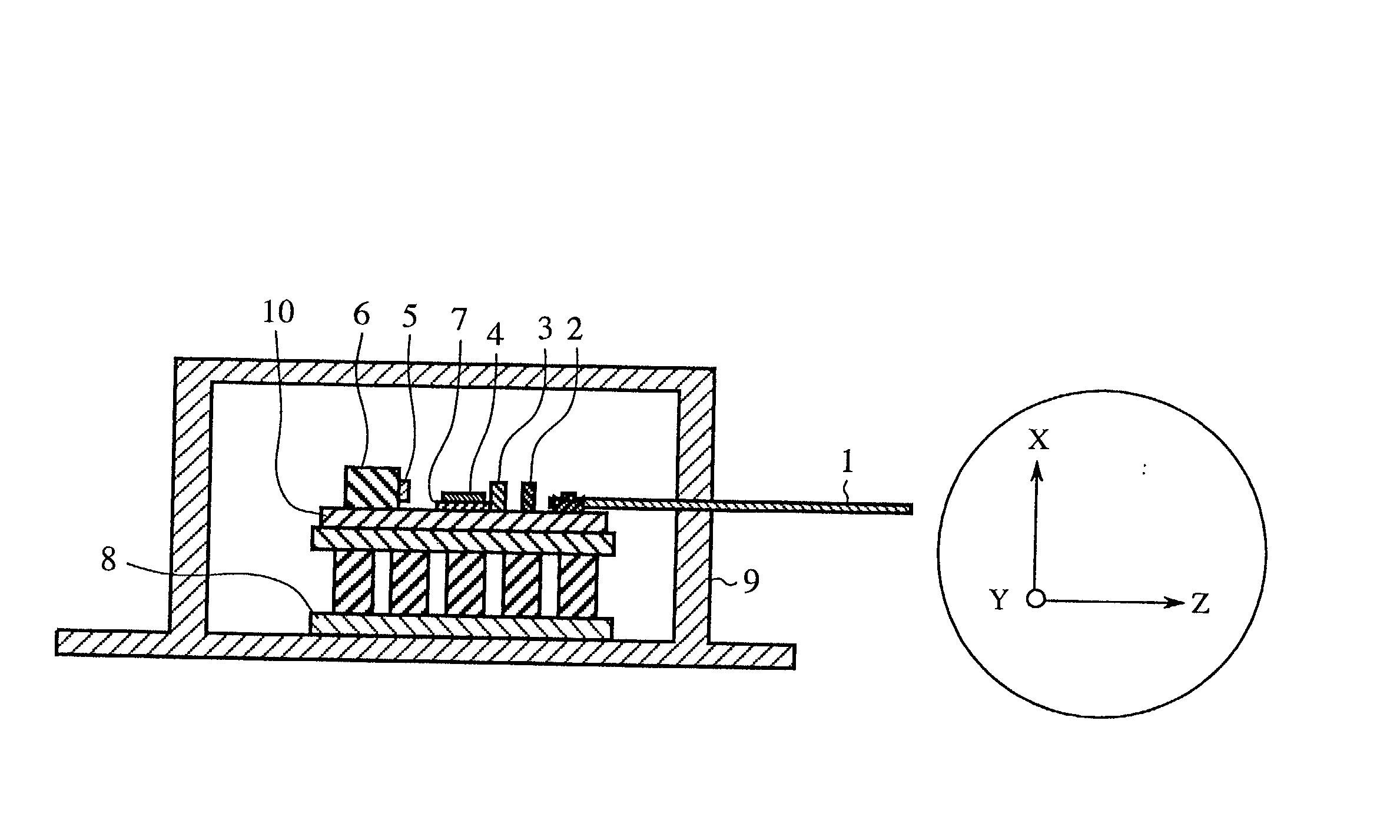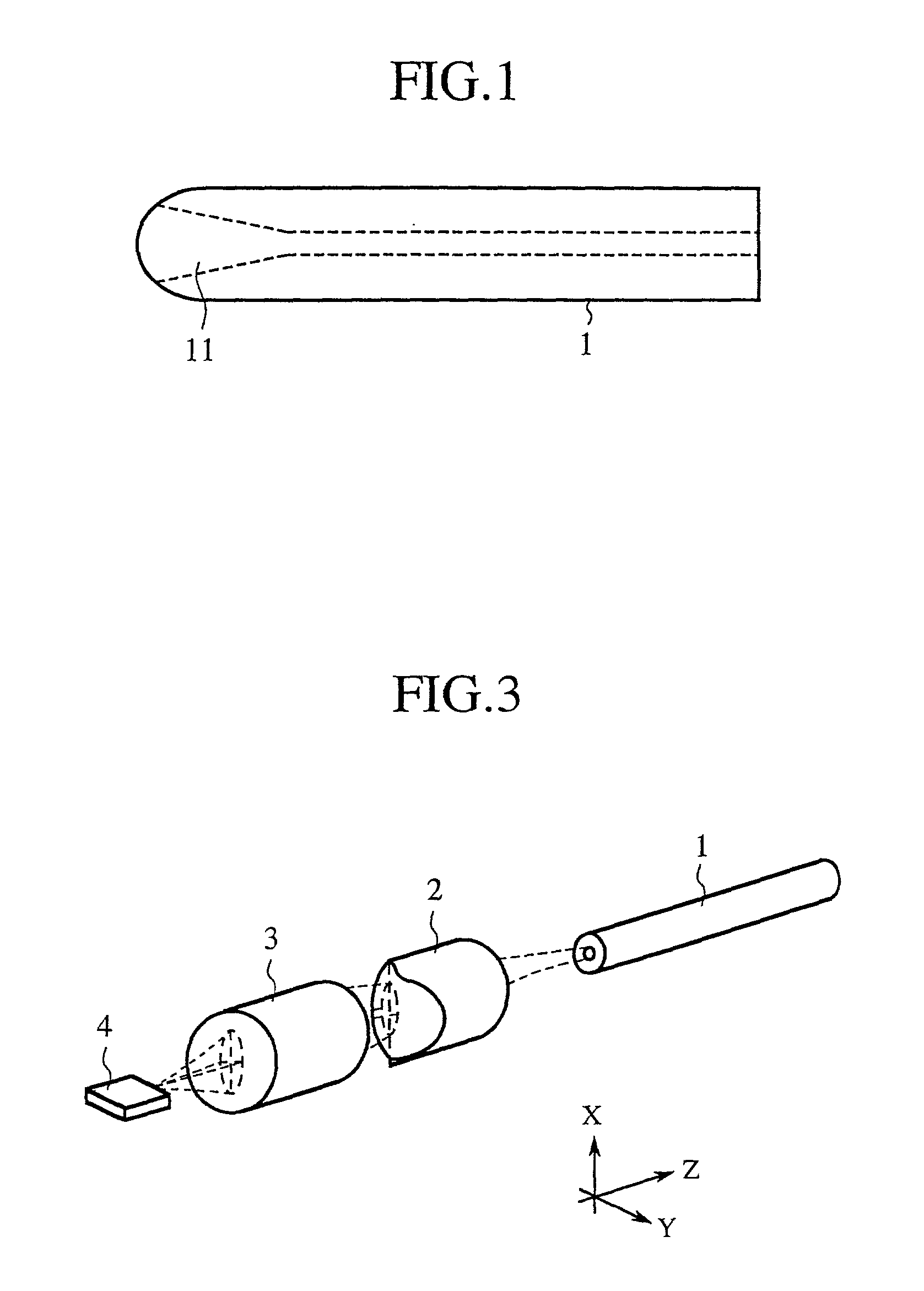Optical semiconductor module and light amplifier
a technology of optical semiconductor modules and light amplifiers, applied in the direction of optical elements, instruments, semiconductor/solid-state device details, etc., can solve the problems of difficult to arrange an isolator in the optical system of the optical module, the oscillation wavelength of the optical semiconductor element is set to a considerably unstable state, and the oscillation wavelength of the laser beam in the optical semiconductor element is difficult to stabilize, so as to achieve high saturation output power and low noise figure
- Summary
- Abstract
- Description
- Claims
- Application Information
AI Technical Summary
Benefits of technology
Problems solved by technology
Method used
Image
Examples
embodiment 1
[0040] FIG. 2 is a schematic view showing an optical semiconductor module according to a first embodiment of the present invention. In FIG. 2, 1 indicates an optical fiber. 2 indicates a second lens. 3 indicates a first lens. 4 indicates an optical semiconductor element. 5 indicates a monitoring photo diode (PD). 6 indicates a PD carrier. 7 indicates a sub-mount. 8 indicates a Peltier cooler. 9 indicates a hermetic package. 10 indicates a chip carrier.
[0041] FIG. 3 is a constitutional view of an optical system picked up from the optical semiconductor module of the first embodiment of the present invention. FIG. 4 is an explanatory view showing a radiation pattern of a laser beam radiated from the optical semiconductor element 4. In FIG. 4, 12 indicates a mode field. 13 indicates a far field. The optical semiconductor element 4 has the mode field 12 lengthened in the lateral direction. Because of the shape of the mode field 12, the far field 13 is formed in a shape lengthened in a lo...
embodiment 2
[0046] In the first embodiment, a lens system composed of the first lens 3 and the second lens 2 is arranged in the optical semiconductor module. In this case, a coupling optical system is complicated, and the number of optical elements and the number of steps of the assembling work are increased. The complication of the coupling optical system and the increase of both the optical elements and the assembling work influence on the assembling precision of the optical semiconductor module. To prevent these problems, in a second embodiment, the second lens 2 is tightly attached to the optical fiber 1 by using a bonding agent, or the second lens 2 is tightly attached to the optical fiber 1 according to a melting method. Therefore, the number of optical elements is decreased, and the assembling work can be easily performed. In addition, as is described in the first embodiment, it is not required to process the second lens 2 with high processing precision. Therefore, even though the second...
embodiment 3
[0048] As is described in the second embodiment, the optical fiber 1 and the second lens 2 are connected with each other in a third embodiment. In cases where a refractive index of the core of the optical fiber 1 differs from that of the second lens 2, Fresnel reflection of the laser beam necessarily occurs on an end face of the optical fiber 1. In cases where the optical semiconductor element 4 is formed of a semiconductor laser, because the laser beam reflected on the end face of the optical fiber 1 is returned to the semiconductor laser, oscillation conditions in the semiconductor laser are made unstable. For example, an optical fiber often used for an optical connector is processed according to a physical contact (PC) polishing, and a maximum value of a reflectance of the optical fiber is equal to -40 dB. Therefore, to obtain a reflectance of -40 dB in the optical fiber 1, it is required to set a difference in refractive index between the second lens 2 and the core of the optica...
PUM
 Login to View More
Login to View More Abstract
Description
Claims
Application Information
 Login to View More
Login to View More - R&D
- Intellectual Property
- Life Sciences
- Materials
- Tech Scout
- Unparalleled Data Quality
- Higher Quality Content
- 60% Fewer Hallucinations
Browse by: Latest US Patents, China's latest patents, Technical Efficacy Thesaurus, Application Domain, Technology Topic, Popular Technical Reports.
© 2025 PatSnap. All rights reserved.Legal|Privacy policy|Modern Slavery Act Transparency Statement|Sitemap|About US| Contact US: help@patsnap.com



